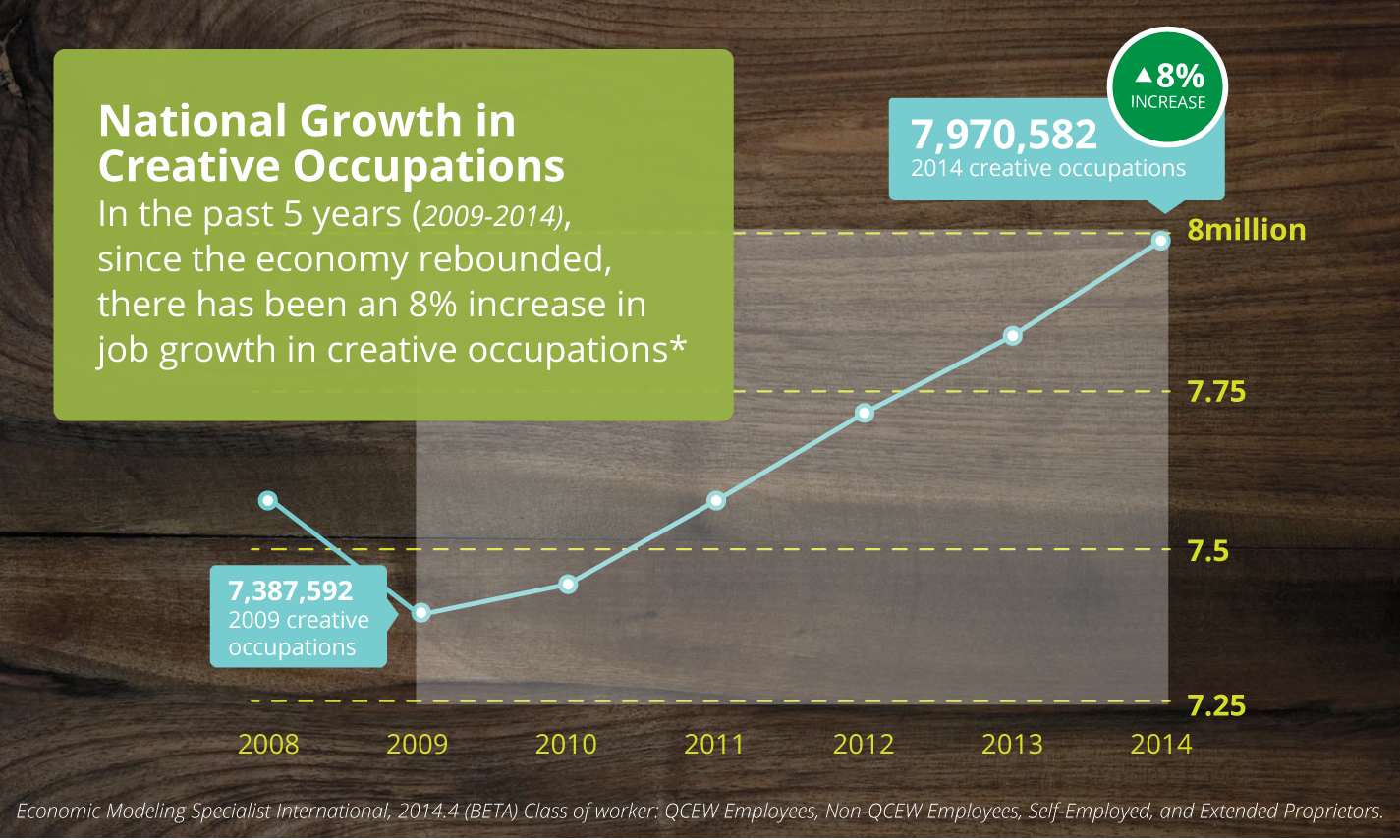Studies of the economic value of the arts and creative economy are rarely commissioned on an annual basis. Instead, they are commonly managed through one-time or periodic funding efforts. When this feature is combined with the fact that many studies of the same defined geographic area are rooted in the perspectives of different research vendors, the result is that the studies frequently are inconsistent in the methods they use to collect, analyze, and report arts and creative economy data. Seeming to fall from the sky, we call the product of this inconsistent work a “plop” report.
Plop reports are sometimes worthwhile exercises; however, they lack the contextualization that annual reports provide, and they also frequently lack the methodological consistency that allows the results to be used for year-to-year comparative purposes. These periodic efforts may be better than nothing, but they are not positioned to best serve public sector organizations, which need steady streams of reliable data in order to make the case for the economic value of the arts and creative economy.
Why Data Quality Matters
Several arts and culture plop reports that are now in use come with very misleading messages. For example, some rely on data from a single year and–because of the time lag between the commissioning and the report of the findings of the studies–some of these data are cited years after a study has been released. Moreover, many of these studies continue to be used years after the data in them have become irrelevant. Consider the problems inherent in using economic data from the Great Recession as current research–in fact, many studies do. When this is done, data quoted from an old report are highly misleading, if not altogether useless.
A key challenge of these periodic reports is that the groups that are targeted to receive them frequently work in a world where regularly updated reports are available. When trying to communicate with a local or state economic development office, an area chamber of commerce, or a special regional economic development commission, one can be certain that nearly all of these organizations have access to up-to-date data that are collected and presented in a consistent manner year after year. If arts and creative economy advocates do not have access to comparable data that are both highly credible and annual in nature, how are they supposed to partner with these entities?
CVSuite Data..The New Standard
The Creative Vitality™ Suite (CVSuite) provides arts and creative economy organizations with the opportunity to dramatically increase the usefulness of data-based arts and creative economy studies. The CVSuite™ does this by providing low-cost annual data updates using a consistent method of measurement. In addition, up-to-date Web technologies enable instant 24/7 access to these data. As a result, clients no longer need to wait for researchers to finish their work. Because the CVSuite™ allows ongoing access to regularly updated data, the arts and creative economy user can join important meetings with the most current and highly credible data in hand. Finally, the Creative Vitality™ Suite does not require the use of volunteers to collect data or the hiring of a research firm to process the data collected. It comes with experts who can–at no cost–advise users on the best ways to put their creative economy data to work.
* Creative Occupations are defined as the 59 SOC codes contained in CVSuite™. Please see data sources in the users guide for more detailed information about CVSuite™ occupations.


Comments are closed.